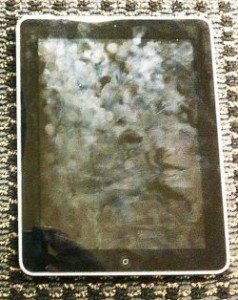Touch screens seem to be the new trend right now, but when designing a user interface for a product, you need to think of what the primary uses are. While touch screens may look cool, they have several issues that do not make them ideal for certain situations and environments, where custom silicone rubber products might prove to be much more beneficial. Some of the main issues to consider about touch screens when deciding what user interface to go with are fingerprint marks, feel, durability, cost and maintenance.
Touch screens have been in use since the 1960’s, but they have still not been able to solve one of their most frustrating problems, fingerprint marks. Everyone has used a touch screen where there were so many fingerprint and smudge marks on the screen that it became harder to see or press a desired button. Even if you have just cleaned your hands, the oils from your skin still leave annoying smudge marks. While using a custom-manufactured silicone keypad, you might leave oil behind from your hands, but this will have not have an effect on the function of your product.
Feedback
The feel of a user interface is a big factor when deciding on what product to go with; people expect some kind of feedback when they push a button. With a touch screen, this can leave you jabbing at the screen to try to get some sort of click response. Silicone rubber keypads allow you to have not only a distinct response, but also by adjusting the snap ratio, you have the option to create the exact feel and response that you want.
Durability
One major difference between a touch screen and silicone rubber keypad is the durability of the product. A touch screen can be scratched by fingernails and debris. This can often make a touch screen more difficult to press certain buttons. You also cannot press buttons on a touch screen with gloves on, unless they are special gloves that are made for touchscreens. Silicone rubber keypads are known to be extremely durable. If a button on a keypad gets scratched, you can still press the button with no effect on the function. They can also be used in extreme environments, anywhere from a scorching desert to a freezing conditions.
When designing a product, cost is normally a main concern. The cost of a silicone keypad is significantly lower than the cost of a touch screen. While over the years touch screen prices have been decreasing with new technology, they are still exponentially more expensive than silicone rubber keypads. High-priced luxury products may sell well to a certain segment of consumers, but you are also limiting your potential audience.This is not only something to consider when thinking about a one-time cost, you also need to think about the maintenance of your user interface. Touch screens can be difficult to fix or replace, and normally need a specialized technician. Touch screens are ideal interfaces for some electronics, but realistically only a limited number of them. Custom silicone keypads provide an inexpensive and sturdy interface solution that will last years after touch screens wear out.
Contact SiTECH today to learn more about the advantages of choosing a custom silicone rubber keypad or component at 757-887-8488 or email us at CS@SiTech-Corp.com.









